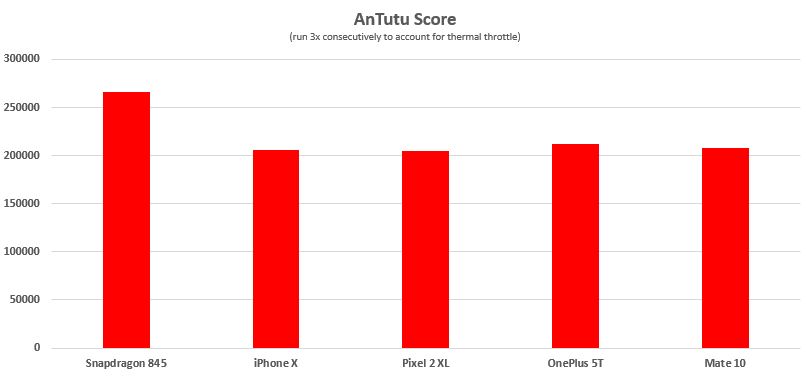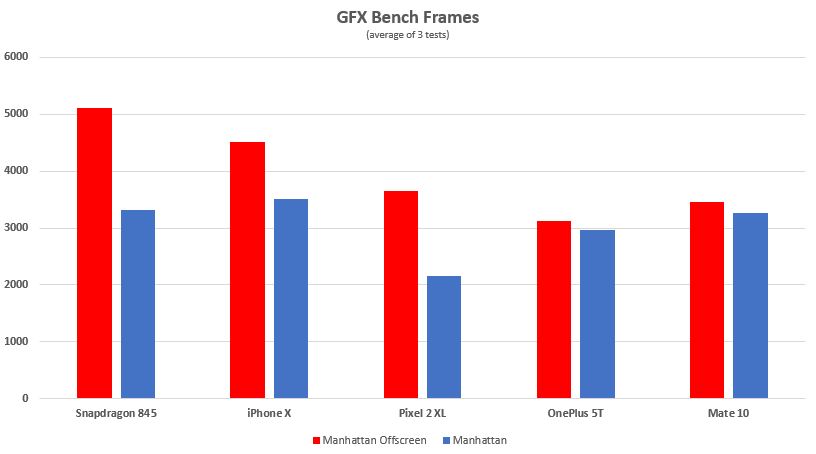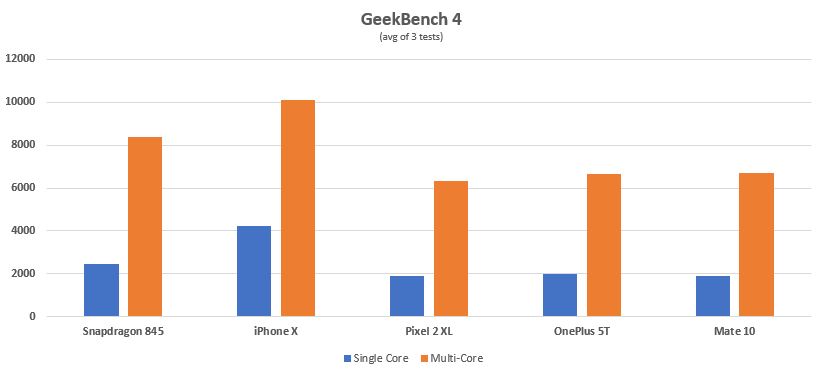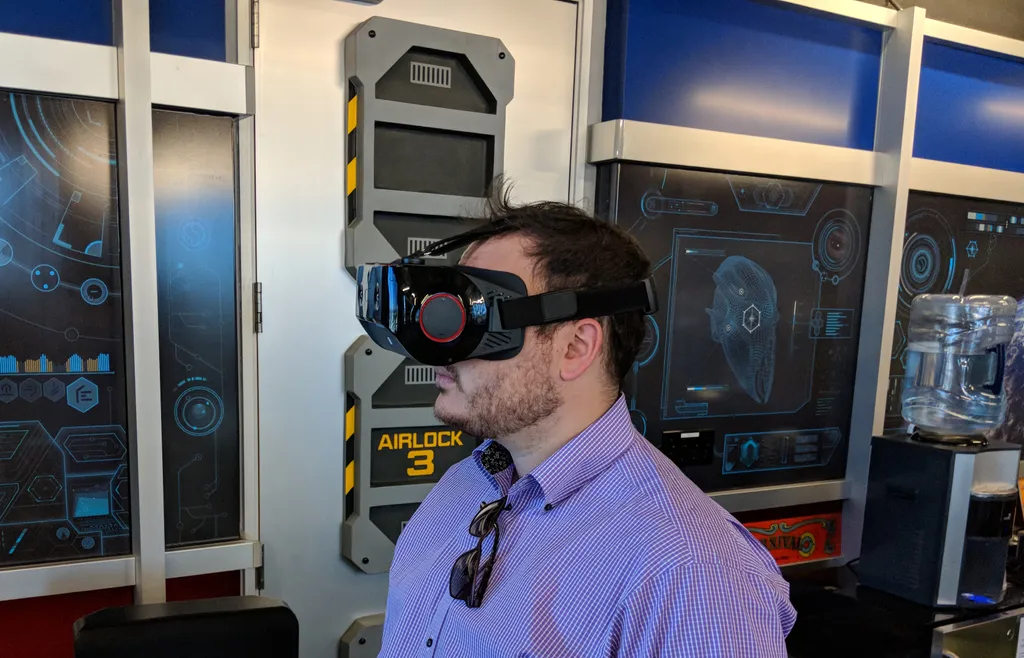Last week, Qualcomm invited me onsite to benchmark their latest Snapdragon 845 SoC and platform. This new Snapdragon 845 was originally unveiled at the company’s big event in Maui late last year. With the new Snapdragon 845 there are many improvements to the GPU performance, with a focus on VR and AR applications.
The new Snapdragon 845 brings a completely new generation of GPU architecture into play while still remaining on the 10nm process node. I spent some time comparing the new Snapdragon 845’s performance against the leading smartphones so that you can get an idea of how much of an improvement this really is. Additionally, it will help you get an idea of what kind of performance levels the new Snapdragon 845 VR and AR HMDs might have when they release this year.
Snapdragon 845 Performance
I ran many tests, but for the purposes of XR, I’m going to just include GeekBench 4, GFX Bench and AnTuTu. Each of these represents a different part of the SoC’s performance and AnTutu represents whole system performance.

As you can see from AnTuTu, the Snapdragon 845 is approximately 30% faster than the previous generation and the iPhone X. This has a lot to do with the fact that AnTuTu gives graphics performance a considerable amount of weight, but also CPU and other functions including UX and memory. In fact, the Snapdragon 845 development device that Qualcomm provided for testing has slower memory than some other commercial devices and is around the same form factor as the other devices tested rather than a thick development device that has excessive cooling. More on cooling later.

For GFX Bench, we are looking at purely graphics performance. The red bar represents raw GPU performance independent of the display, while Manhattan performance shows OpenGL ES 3.0 performance based on the installed display on the device. Do keep in mind that GPU performance is extremely crucial for AR and VR and that’s why this is such an important benchmark and maximum theoretical performance increased nearly 30% on GFX bench over the Snapdragon 835 and could translate to significantly improved framerates and more consistent latency.

GeekBench 4 is the CPU benchmark that everyone loves to look at when comparing smartphones, as you can see here, the Snapdragon 845 is without a doubt the fastest among the Android bunch by a noticeable amount, but Apple still takes the cake with their A11 processor inside of the iPhone X. However, when it comes to AR and VR, GPU performance is still more important than CPU even though you still can’t be a slouch when it comes to CPU either.
Snapdragon 845 in XR
In addition to the Snapdragon 845 performance, Qualcomm also showed their latest Snapdragon 845 VR development kit, which is an update to the Snapdragon 835 version released last year for partners to build from. This new version appears to incorporate the use of a 3-DoF controller with the possibility of a 6-DoF possibly coming down the road. They still support eye-tracking with the Snapdragon 845 development kit hardware, but it hasn’t been integrated yet in software so we may still be waiting on that.
In addition to having increased performance of between 20% and 30%, the Snapdragon 845 also features a power reduction of about 20%-30% when running at the same performance as the previous generation. That means you can stream videos in 4K 360 at 20%-30% less power or get more battery life out of the same battery size or reduce battery size and still get the same battery life. That’s why the Snapdragon 845 is such a great chip for XR. I was already pretty excited for some Snapdragon 835 devices last year, but once I knew how fast Snapdragon 845 would be, I immediately changed my mind and had my eyes set on the Snapdragon 845. I suspect that some companies also had the same frame of mind and that’s why companies like Facebook haven’t explicitly stated what SoC is inside of the Santa Cruz prototype, even though we know it is Qualcomm.
Disclosure: My firm, Moor Insights & Strategy, like all research and analyst firms, provides or has provided research, analysis, advising, and/or consulting to many high-tech companies in the industry cited in this article, including AMD, Intel, Peraso, Qualcomm, and others. I do not hold any equity positions with any companies cited in this column.


























